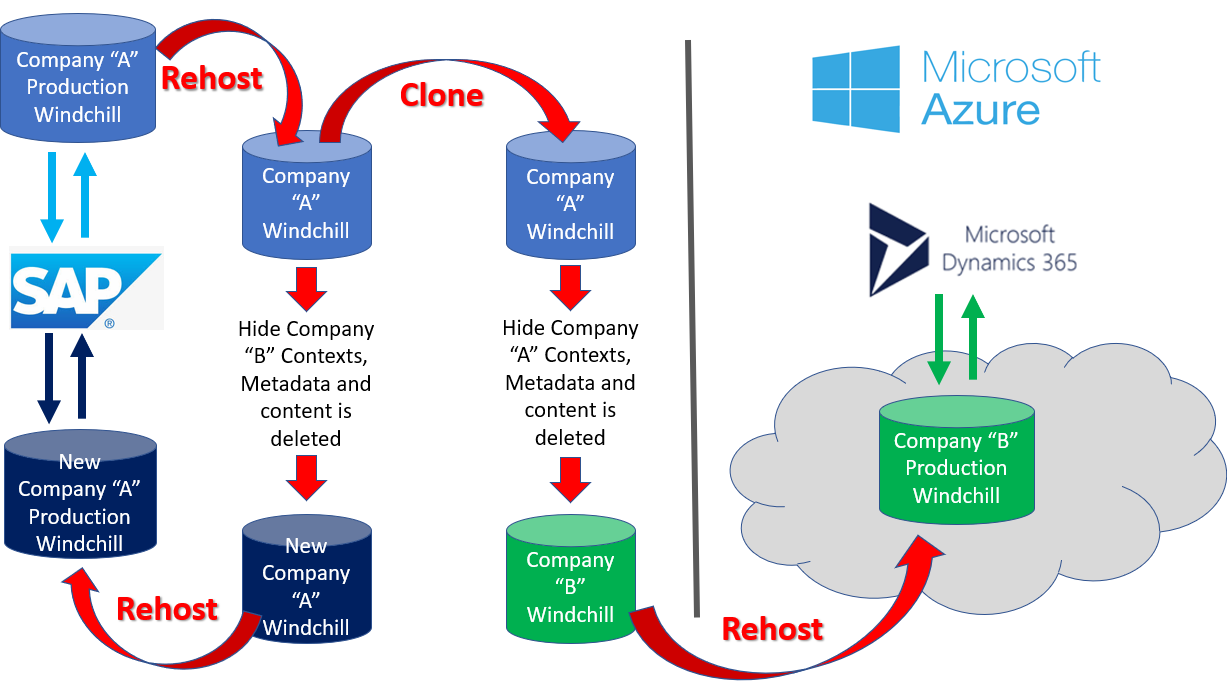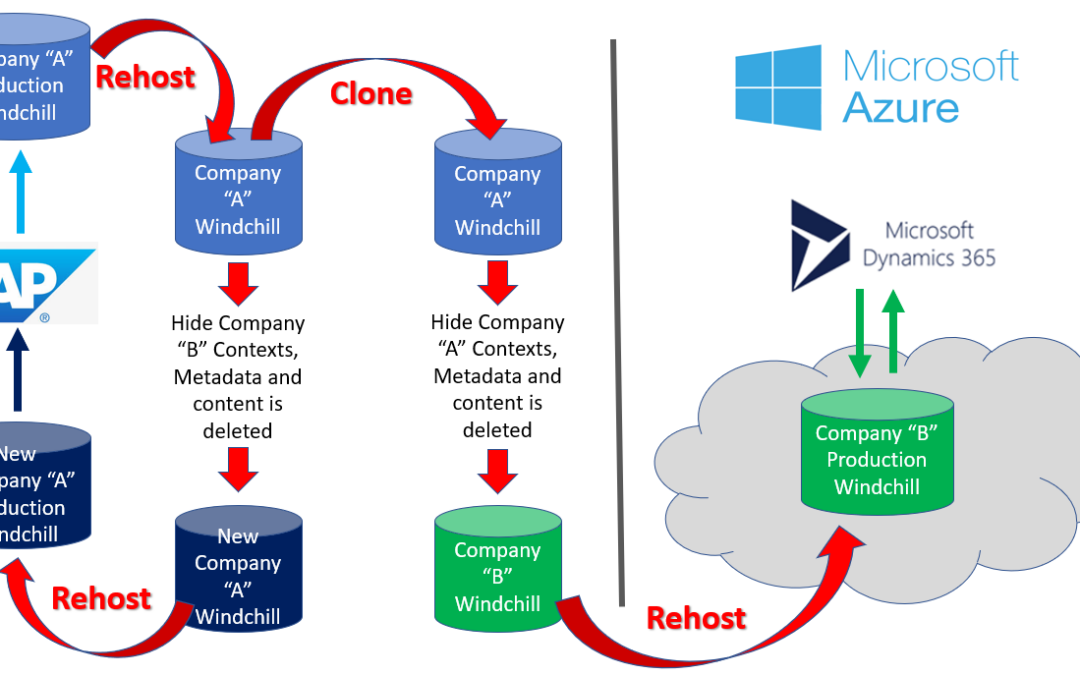Engineering and manufacturing companies going through a merger/acquisition or divesture have a tall order in front of them. They have complex data sets, data management tools, business systems and processes (ERP, PLM, MES, NPI, ECO, QMS, etc.) that need to be split and migrated. Often, upper management won’t realize how complex some of these projects can be, and what might be at stake if they are not done correctly. Picking the right strategy (and partner) can reduce your risk, shorten your project timeline, and lower your project spend.
One of our longtime customers (Company A) recently went through a divesture where a private equity group acquired a large division (what would become Company B). Systems and data that were integral now needed to be split. Legal teams on both sides were involved to ensure intellectual property was protected. This spiraled into dozens of questions with management and integration teams around who owned what, how to properly split the data, and what to do with creative or proprietary information. In most cases, companies can be staring down thousands, and in this case millions, of documents, data sets, and metadata that need to be separated.
Where did Company A start with this process? Calling Fishbowl. We were longtime strategic partners and they were confident we could help them through these new phases of their companies. We discussed the main approaches to accomplish what they wanted – pros, cons, tradeoffs, risks – and the teams decided on the best approach for their businesses. In this case they needed Fishbowl to split the Windchill instance and integrate it with a new ERP system… and we had less than four months from project kick off to production launch.
There are multiple approaches to splitting up a Windchill system, and three popular ones are:
- Copy, Hide, Delete
- PTC Windchill Bulk Migrator (WBM)
- Windchill Export / Import

The tasks of rehosting and cloning systems are not the difficult parts of a project like this. The trickier part is trying to determine the parent-child relationships so that you don’t remove data that is required by one company or the other. The Windchill relational data model is very powerful, but it is complex and data is intertwined. The other challenge was the timeline… all of this needed to be completed as a test migration, integrated with a completely new ERP system (Dynamics 365 and not SAP) and, have use cases validated, pass user acceptance testing, and production launch just after the New Year.
This is where the Fishbowl Difference comes in…Fishbowl has strategic intellectual property code, our own off-the-shelf migration apps, and PTC WBM tools that we bring to all our projects. In this case, we used Fishbowl IP query tools to find dependencies that existed in-between Company A and Company B contexts. Then we used Fishbowl tools to mass move the newly discovered shared data from Products into Libraries and revalidate the data dependencies. Once this was accomplished, the systems could be divided as shown in the graphic above. Fishbowl and Customer B also had to collaborate for the development of the integration with Windchill and Microsoft Dynamics 365. Dynamics 365 was new and very different from SAP, so Fishbowl had to be nimble and responsive to the project team requirements with such a small window of time. Our ability to meet every schedule goal gained high praise from the customer’s leadership and integration team leads.
Now, both companies are running with their data properly split and migrated to the correct repositories. Company A is confident that Company B doesn’t have any of their data and vice versa.
Fishbowl is always available to help you with Windchill. If you need assistance, don’t hesitate to reach out to us. For more information about PTC Windchill, check out our PTC Windchill and Creo Consulting page, PTC Windchill and Creo Software page, and our Windchill blog posts.


0 Comments